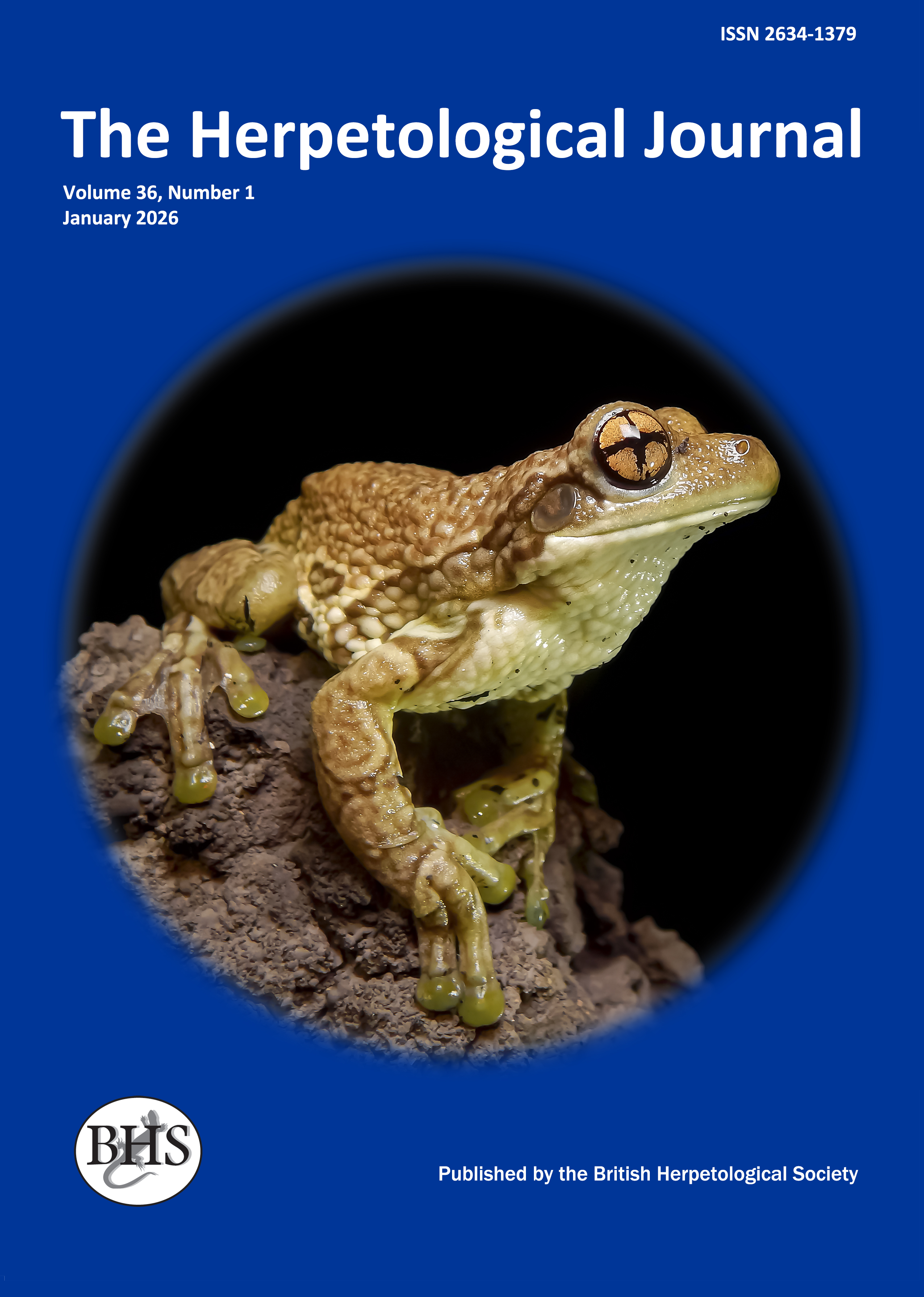
The Herpetological Journal
The Herpetological Journal is the Society's prestigious quarterly scientific journal. Articles are listed in Biological Abstracts, Current Awareness in Biological Sciences,Current Contents, Science Citation Index, and Zoological Record.
ISSN 0268-0130
2023 Impact Factor for the Herpetological Journal is 1.1, with the Journal sitting just below Quartile 2 in Zoology, at percentile 46.9
pdf 02. Reconstructions of the past distribution of Testudo graeca mitochondrial lineages in the Middle East and Transcaucasia support multiple refugia since the Last Glacial Maximum
723 downloads
Open Access
https://doi.org/10.33256/31.1.1017
pp. 10-17
Authors: Oguz Turkozan, Çağaşan Karacaoğlu & James F. Parham
Abstract: A cycle of glacial and interglacial periods in the Quaternary caused species’ ranges to expand and contract in response to climatic and environmental changes. During interglacial periods, many species expanded their distribution ranges from refugia into higher elevations and latitudes. In the present work, we projected the responses of the five lineages of Testudo graeca in the Middle East and Transcaucasia as the climate shifted from the Last Glacial Maximum (LGM, Mid – Holocene), to the present. Under the past LGM and Mid-Holocene bioclimatic conditions, models predicted relatively more suitable habitats for some of the lineages. The most significant bioclimatic variables in predicting the present and past potential distribution of clades are the precipitation of the warmest quarter for T. g. armeniaca (95.8 %), precipitation seasonality for T. g. buxtoni (85.0 %), minimum temperature of the coldest month for T. g. ibera (75.4 %), precipitation of the coldest quarter for T. g. terrestris (34.1 %), and the mean temperature of the driest quarter for T. g. zarudyni (88.8 %). Since the LGM, we hypothesise that the ranges of lineages have either expanded (T. g. ibera), contracted (T. g. zarudnyi) or remained stable (T. g. terrestris), and for other two taxa (T. g. armeniaca and T. g. buxtoni) the pattern remains unclear. Our analysis predicts multiple refugia for Testudo during the LGM and supports previous hypotheses about high lineage richness in Anatolia resulting from secondary contact.
Keywords: Testudo graeca, niche modeling, Last Glacial Maximum, Middle East, Transcaucasia

